The post Where is the best place to put your ocean cleanup device? Not where currently proposed. first appeared on Deep Sea News.
]]>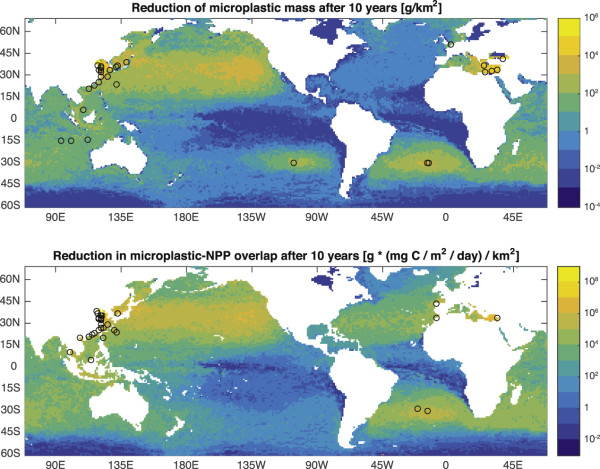
The results? You had better put most of your 29 giant plastic scooping machines close to where the biggest litter bugs reside, near coastal Asia. Where you shouldn’t put them? In the center of the North Pacific Gyre.
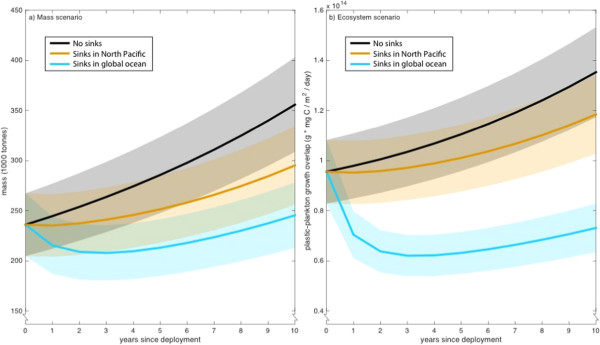
But it’s not all doom and gloom people, this study lends support for reducing plastic use and just stopping it from getting into the ocean. That’s why I think projects like the Baltimore’s Mr. Trash Wheel and Seabin are so awesome, they are stopping trash and plastic from getting into the ocean right now. And while it’s known that I am not an ardent fan of the Ocean Cleanup, and this is certainly not an endorsement, this study does lend some support for relocating the proposed array closer to the coasts in shallower water which would be easier to design, build and service**. Here’s to hoping the Ocean Cleanup takes the conclusions of this research to heart, but I’m not holding my breath since they are only oceanographers.
*This paper judiciously doesn’t address engineering or even feasibility, but rightfully so. It just assumes that no matter where a plastic sink was put it operates at 45% efficiency (the number put forth by the Ocean Cleanup people), which is all you need to figure out the best place for your ocean cleanup booms.
** This is totally ignoring that when the array is moved inshore, you might not be in international waters anymore, subject to maritime laws of different countries and will now have to contend with much more ship traffic and larger sea life.
REFERENCES:
P. Sherman and E. van Sebille. Modeling marine surface microplastic transport to assess optimal removal locations. Environmental Research Letters, 11(1):014006, 2016.
The post Where is the best place to put your ocean cleanup device? Not where currently proposed. first appeared on Deep Sea News.
]]>The post Easy Big Fella first appeared on Deep Sea News.
]]>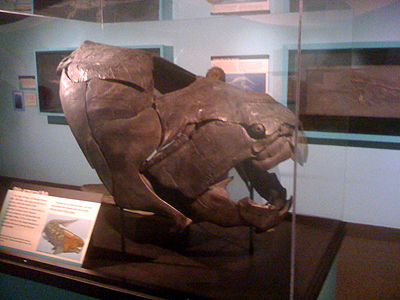
Way before even your great-great-grandpappy was born and Ohio was ocean instead of cornfields, it was the “Age of the Fishes”. During this Devonian (400-360 million years ago), the placoderms, giant, shark-like, armored fishes, ruled the oceans. Among the largest and most fearsome of these were the arthrodires, the joint necks. The lovely pet above is Dunkleosteus at 25 feet in length. I think we are going to need more butter! Given all the weight of the armor, Dunkleosteus was probably a slow swimmer. But hey when you are that big and armored how fast do you need to be?
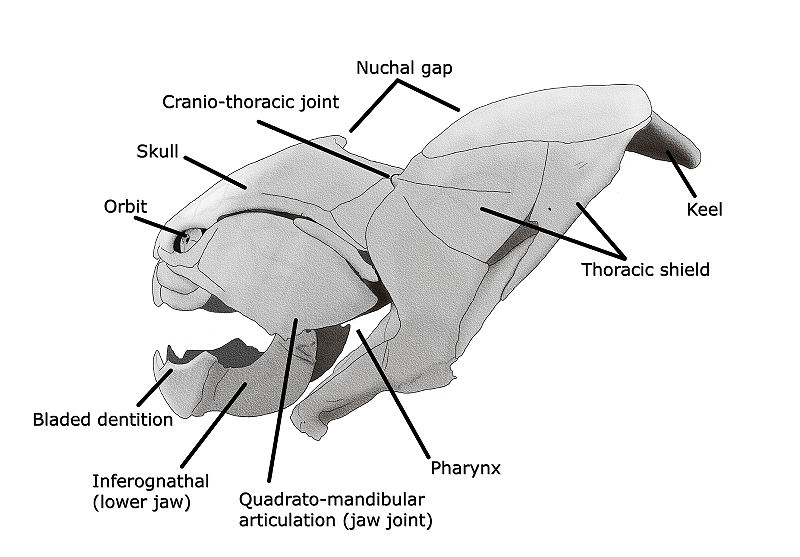
Instead of teeth, those bony plates you see above would shear past one another forming vicious cutting edges. In 2007 Anderson and Westneat, built a computer model based on this big boy’s bones and muscle attachements. The two authors determined that a large individual could rip apart its prey with a force of 8000lbs at the tip of the jaws and with more than 11000lbs at the back of the dental plates. The authors conclude that “This bite force capability is the greatest of all living or fossil fishes and is among the most powerful bites in animals.”
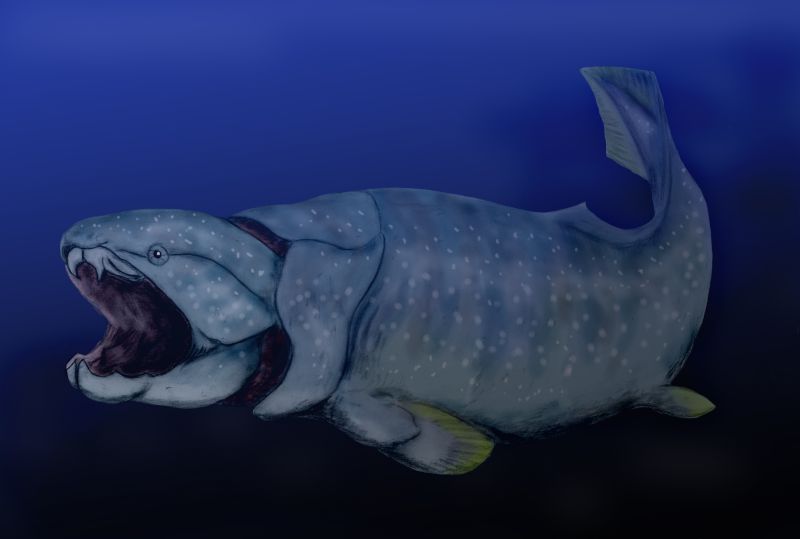
Anderson, P., & Westneat, M. (2007). Feeding mechanics and bite force modelling of the skull of Dunkleosteus terrelli, an ancient apex predator Biology Letters, 3 (1), 76-79 DOI: 10.1098/rsbl.2006.0569
The post Easy Big Fella first appeared on Deep Sea News.
]]>